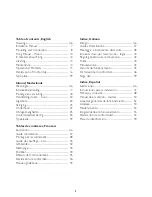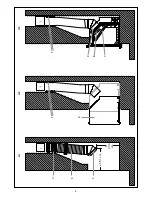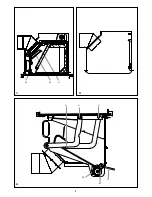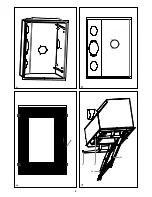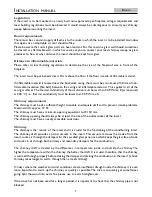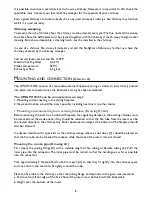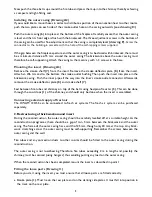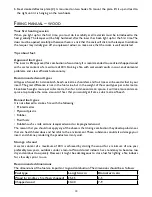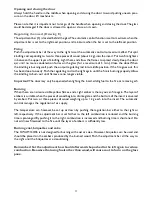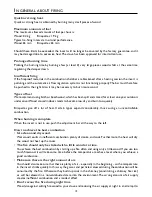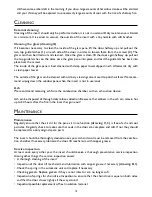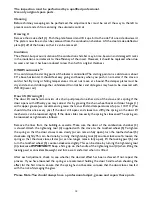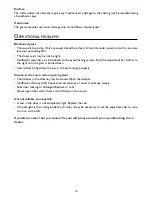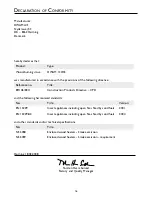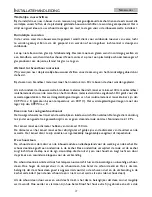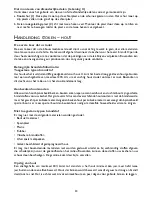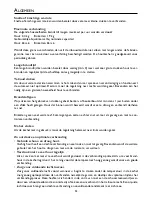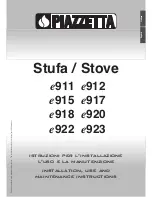
7
I
nstallatIon
manual
Legislation
If the insert is to be mounted in a newly built, non-approved open fireplace, all legal requirements and
local building regulations must be observed. It would always be advantageous to consult your chimney
sweep before mounting the insert.
Room requirements
There must be a constant supply of fresh air to the room in which the insert is to be installed. A window
that opens or an adjustable air vent should suffice.
Please be aware that not all glass parts are heat-resistant. For this reason, a glass wall should sometimes
be treated as a flammable wall, in which case we ask you to contact your local chimney sweep or glass
producer to hear at what distance the insert should be kept from glass.
Distance to inflammable materials
Please refer to local building regulations to determine the size of the fireproof area in front of the
fireplace.
The insert must be positioned at least 0 cm above the floor if the floor is made of flammable material.
If inflammable material is located near the brickwork casing, there must be a minimum of 0 mm of non-
flammable insulation (fire batt) between the casing and inflammable material. This applies to all of the
casing’s surfaces. The thermal conductivity of the insulation must be less than 0.09 W/m x K (as measured
at 200 ºC); i.e., thermal conductivity must be lower than 0.09 W/m x K.
Chimney requirements
The chimney must be of a sufficient height to enable an adequate draft and to prevent smoke problems.
Nominal draft: approx. 12 Pa.
The chimney must have a minimum opening equivalent to Ø 150 mm.
The chimney opening should always be at least the size of the outlet socket of the insert.
The chimney must have an easily accessible soot door.
Chimney
The chimney is the “motor” of the insert and it is crucial for the functioning of the woodburning insert.
The chimney draft provides a partial vacuum in the insert. This vacuum removes the smoke from the
insert, sucks air through the dampers for the so-called glass pane rinse which keeps the glass free of soot,
and sucks in air through both primary and secondary dampers for the combustion.
The chimney draft is created by the differences in temperature inside and outside the chimney. The
higher the temperature within the chimney, the better the draft. It is crucial, therefore, that the chimney
is warmed through properly before closing the damper and limiting the combustion in the insert (a brick
chimney takes longer to warm through than a steel chimney).
On days where the weather and wind conditions create insufficient draught inside the chimney, it is even
more important to warm up the chimney as quickly as possible. The trick is to quickly get some flames
going. Split the wood into extra fine pieces, use an extra firelighter, etc.
If the stove has not been used for a longer period, it is important to check that the chimney pipe is not
blocked.
E
nglIsh
Содержание 55s
Страница 2: ......
Страница 4: ...1 1 1 A1 A2 A3 7 8 5 6 5 4 3 2 a 39 1 cm b 40 4 cm 1 2...
Страница 5: ...D C 3 2 1 B 1 1 1 6 5 4...
Страница 6: ...E F G 1 1 1 2 2 H...
Страница 57: ...57...
Страница 58: ...58...
Страница 59: ......
Страница 60: ...hwam hwam com www hwam com...



